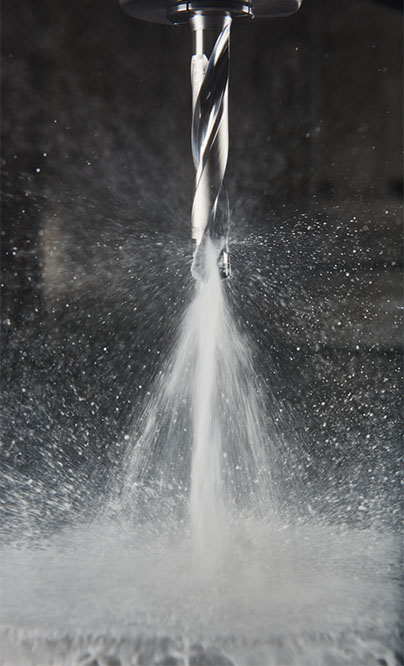What Carbide Delivers for Reaming and Boring
So where does that leave reaming? And what about the other verb in this article’s title: boring? If a job requires a higher hole quality than a carbide drill can produce, a solid carbide reamer might be the next logical step.
“For the most part, people making holes are concerned with diameter followed by surface finish, and reamers do a great job in both respects,” Schade says. “If you’re looking for a higher level of cylindricity, straightness and positioning, boring is a better option, but at the expense of longer cycle times.”
Keith Hoover, a lead applications engineer at Kennametal, agrees. “A reamer is a multi-flute hole-finishing tool, which typically means a productivity improvement four to 10 times that of boring, depending on the number of flutes,” he says. “The flip side to this argument is that a boring tool provides greater flexibility in size control and can cut multiple diameters. Reamers can do this as well, but it requires a custom, multistep tool.”
Carbide tools rule here as well. Kennametal and other tooling makers offer all manner of solid carbide reamer geometries—many with coolant through—so there’s simply no reason to sacrifice cycle time to save a few dollars.
For larger diameters, a range of modular options are also available, including Kennametal’s RHR disc-style reamers.
In those instances where boring is needed, all three experts suggest that shops look at one of the company’s DeVibrator tunable boring bars. The line boasts replaceable boring heads, coolant through and the ability to dampen vibration at lift-to-drag ratios of up to 14xD.
Don’t let the chips fly where they may. Instead, read our “8 Vital Tips to Improve Chip Control When Drilling.”
Critical Role of Toolholders in Drilling, Reaming and Boring
Despite the many advantages of modern drills, reamers and boring tools, Hoover cautions that they might not be for everyone.
“If you’re running one of our drills in an ER collet or Weldon shank toolholder, you’re less likely to see the tool life or hole quality that you would with a hydraulic chuck,” he says. “A similar situation exists with reaming tools, which is why a floating holder or steerable hydraulic chuck might be needed to reduce runout as much as possible.”
The machine setup, the toolholders and the adapters must be of equal caliber to the extremely high-performance carbide drilling and reaming products that manufacturers are producing today, Slusarcyk says.
“If those tools aren’t being put into high-performance adapters, the machine is worn out or the setup less than rigid, then they’re never going to achieve the benefits that they otherwise would,” he says. “That said, even a general-purpose carbide will outperform HSS in virtually all CNC applications, regardless of the holder.”








Talk to Us!
Leave a reply
Your email address will not be published. Required fields are marked *